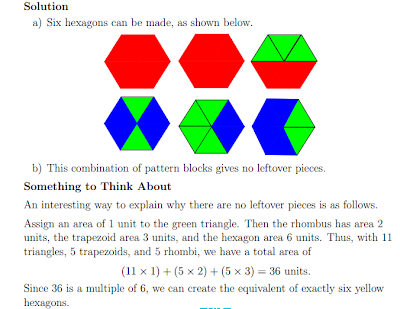
Monday, October 28, 2013
Chocolate and Child Labour
Fatima received a chocolate pumpkin as a gift from her friend on Hallowe'en. The chocolate cost $2.00 here in Ontario. The cocoa bean that was made into chocolate was harvested by a child in Africa.
For every dollar spent on chocolate here in Canada, 70 cents goes to the chocolate industry, 15 cents goes to marketing company, 10 cents goes to the packaging company and 5 cents goes to the worker in Africa.
If $20.00 of chocolate is sold: How much profit does the chocolate company make? How much profit does the marketing company make? How much profit does the packaging company make? How many chocolate pumpkins must be sold for the child labourer to earn $20.00?
Show your work and find a way to display your results. Do you think the profits are shared fairly? Explain your answer.
What is your opinion about the above video clip? (Post your answers.)
Sunday, October 27, 2013
It's The Great Pumpkin - Charlie Brown - Math POW - due Friday, Nov. 1st.
Having made it safely back home from trick or treating, it's now time to check out your haul. You are to find the top 5 types of candy that you have collected. To aid you in this venture create a tally chart to record the tasty items. After having recorded tallies, it is now time to display them on a bar graph (We will do this in class - just bring in your tallies). Be sure to title your graph and label your axes. No need to worry, you don't have to record the rocks. Happy Hallowe'en!
Friday, October 25, 2013
Monday, October 21, 2013
Cracking The Code & Prime Numbers
Cryptography involves the use of mathematics to provide privacy in electronic communications. When your internet browser shows a URL beginning with “https”, cryptography based on prime numbers is being used to protect your privacy.
http://cemc.uwaterloo.ca/resources/real-world/protect-privacy.html
http://cemc.uwaterloo.ca/resources/real-world/protect-privacy.html
Open the above link and find out more about cryptography. List three things you learned. Have you ever created a secret code? (Post your answers.)
Sieve of Eratosthenes - Prime Numbers
Watch the above video clip. Why do you suppose this method is called the Sieve of Eratosthenes? When was this method of finding prime numbers created and by whom? (Post your answers.)
Sunday, October 20, 2013
Monday, October 14, 2013
IXL - Week of Oct. 15th - 18th
http://www.learnalberta.ca/content/mesg/html/math6web/index.html?page=lessons&lesson=m6lessonshell07.swf
Open the above link and explore: Factors, Multiples, and Prime Factorization
Number theory - gr. 6
 M.1Prime
or composite
M.1Prime
or composite M.2Identify factors
M.2Identify factors M.3Prime
factorization
M.3Prime
factorization M.4Prime
factorization with exponents
M.4Prime
factorization with exponents M.5Greatest common factor
M.5Greatest common factor M.6Least
common multiple
M.6Least
common multiple M.7GCF
and LCM: word problems
M.7GCF
and LCM: word problems
Number theory - gr. 5
 J.1Prime
and composite numbers
J.1Prime
and composite numbers J.2Prime
factorization
J.2Prime
factorization J.3Divisibility rules
J.3Divisibility rules J.4Divisibility rules: word problems
J.4Divisibility rules: word problems J.5Greatest common factor
J.5Greatest common factor J.6Least
common multiple
J.6Least
common multiple
Challenge Activities:
Thursday, October 10, 2013
In-Class Math POW - due Wednesday, Oct. 16th
Problem of the Week
Problem B
Double Trouble
Riley Waters has decided to join Facebook. A week after posting his profile,
he discovers he has two friends! After another week, his number of friends has
doubled to four. At the end of the third week, his total number of friends has
doubled yet again to 8.
a) If his number of friends continue to double each week, how many friends will Riley have at the end of 6 weeks? Create a T-chart to show your calculations.
b) Continue your chart to show how many friends
Riley would have after 10 weeks.
c) How long would it be until Riley has more than
15 000 friends?
d) There are about 34 million people in Canada. How
long will it be until Riley is friends with at least
that many people?
Friday, October 4, 2013
Math POW #4 - due Thursday, Oct. 10th
http://cemc.uwaterloo.ca/resources/potw/2013-14/POTWB-13-GS-03-P.pdf
Open the above link and read the instructions carefully. Answer the questions and show your work.
Subscribe to:
Posts (Atom)




